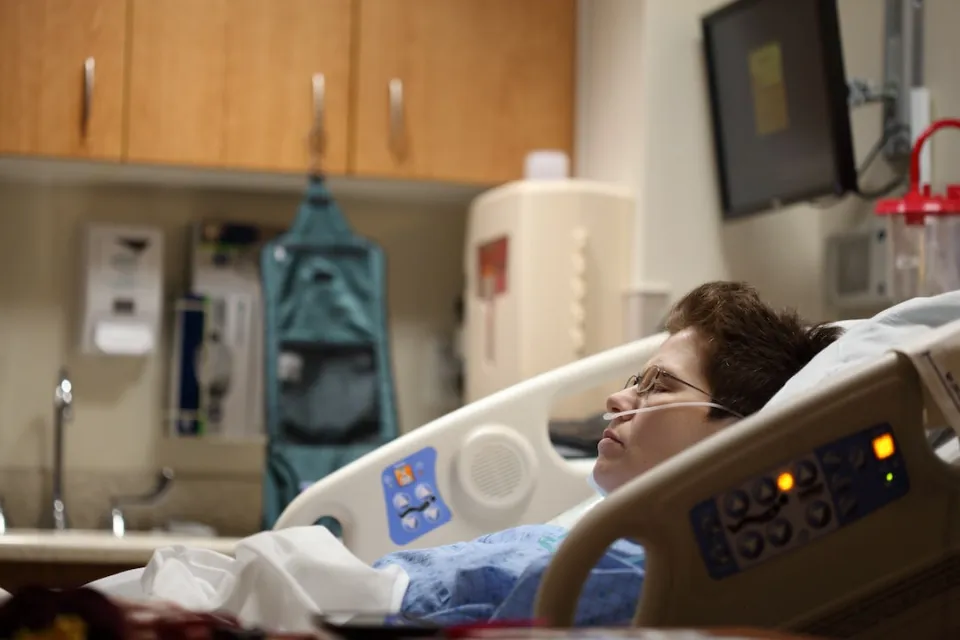Regardless of whether a patient is receiving care in a private home, nursing home, assisted living facility, residential care facility for the elderly, or hospice home, all patients receive comfort care under hospice care.
The Centers for Medicare and Medicaid Services defines four types or “levels” of hospice care. A patient may experience all four levels of hospice services for perhaps a week or ten days. Another patient may experience one level of care for several months of his or her hospice care. Each level of care addresses particular needs, and every hospice patient is different.
Below you will learn what the four stages of hospice care are and what they mean for you. Scroll down!
Read more: What to Put in a Care Package—Best List for Seniors – Elder VIP
What is Hospice Care?
The goal of hospice care is to improve the quality of life for both patients and their caregivers who are dealing with an advanced, terminal illness. In order to help patients in the final stages of an incurable disease live as comfortably and fully as possible, hospice care offers compassionate care.
The hospice philosophy acknowledges that death is the last phase of life and does not attempt to hasten or postpone it. Instead, it affirms life. Instead of treating the disease itself, hospice care focuses on the patient and their symptoms. In order to spend a person’s final days in peace, dignity, and the company of those they love, a team of professionals collaborates to manage symptoms. In addition to being patient- and family-centered, hospice care also emphasizes decision-making with all parties involved.
Where is Hospice Care Provided?
Most hospice care is provided at home — with a family member typically serving as the primary caregiver. Hospitals, nursing homes, assisted living residences, and facilities specifically designed for hospice care are also able to provide care.
No matter where hospice care is offered, hospital admission is occasionally required. A hospital stay might be required, for example, if a symptom can’t be treated at home by the hospice care team.

What Are the Four Levels of Hospice Care?
Hospice care is used when a disease, such as advanced cancer, gets to the point when treatment can no longer cure or control it. In general, hospice care should be used when a patient’s expected lifespan, if their illness progresses as expected, is no more than six months. Advanced cancer patients should consult with their doctor, family, and other caregivers to determine when hospice care should start.
In general, there are four levels of hospice care.
Level1: Home Care
Hospice care is at its most prevalent level. The patient is largely stable, and symptoms like pain or nausea, and vomiting are effectively managed.
There may be times when you need to stay in a hospital, long-term care facility, or an inpatient hospice center even though the majority of hospice care is provided in the patient’s home. Your home hospice team can make arrangements for inpatient care and will continue to work with you and your family on your care. When you and your family are prepared, you can resume receiving care at home.
Level2: Family Care
Meetings that are scheduled on a regular basis and are frequently facilitated by the hospice nurse or social worker keep family members informed about your condition and what to expect. These gatherings also give everyone a chance to express their emotions, discuss current events and needs, and learn more about death and the dying process. Through these meetings, family members can receive excellent support and stress relief. As the nurse or nursing assistant converses with you and your caregivers during routine visits, informal daily updates may also be provided.
Family care supports patients and families who choose hospice care at home, wherever home is. A home hospice care team’s regular visits guarantee comfort and dignity. Diagnosis-specific equipment, supplies, and medication are provided at no cost.
Level3: Coordination Care
Seven days a week, twenty-four hours a day, the hospice team plans and directs all care. This team is in charge of ensuring information sharing between all involved services. This could include the hospital, the physician, and other local experts like pharmacists, clergy, and funeral directors. Any time of day or night, if you or your caregivers have a problem, please don’t hesitate to call the hospice team. There is always someone available to assist you with any needs that may arise. Hospice care assures you and your family that you are not alone and can get help at any time.
Level4: Respite Care
In order to give their primary caregivers a break, patients receive respite care, during which they are temporarily hospitalized in a Medicare-certified inpatient hospice setting. Caregiver efficiency and burnout are reduced by respite care and hospice support.
Some hospice services provide respite care for patients receiving in-home care so that loved ones can take a break from providing care. Respite care can be given in up to 5-day periods of time, during which the person with cancer is cared for either in the hospice facility or in beds that are set aside in nursing homes or hospitals. Families can plan a mini-vacation, go to special events, or simply get much-needed rest at home while they’re cared for in an inpatient setting.

Hospice Care Vs Palliative Care
What is Palliative Care?
Palliative care is a specialized medical treatment for those coping with life-threatening illnesses. Relief from the illness’s symptoms and stress is the main goal of this type of care. The objective is to enhance the patient’s and the family’s quality of life.
How They Are Different?
Both hospice and palliative care aim to improve a patient’s quality of life and relieve their symptoms and side effects. Both have special care teams that address a person’s physical, emotional, mental, social, and spiritual needs. However, despite the fact that palliative care is frequently a part of hospice care, the two are not the same.
Summary
One of the many things to take into account when selecting hospice care is the level of care. The level of care that the hospice offers may vary depending on the requirements of both patients and caregivers. In addition, hospices that receive a small number of patients may not have patients who need care other than routine home care. Consult your doctor and/or a hospice representative if the hospice you are considering does not offer care that goes above and beyond the standard level of home care during the three-year period.
FAQs
How Long Does the Average Hospice Patient Live?
How much time do patients typically spend in hospice? Most patients wait until they are close to death before enrolling in hospice. According to a study that was published in the Journal of Palliative Medicine, roughly half of the patients who enrolled in hospice died within three weeks, while 35.7 percent died within one week.
Do Hospice Patients Ever Recover?
Yes, the hospice must release the patient from their care if they determine that they are no longer terminally ill with a prognosis of six months or less.



